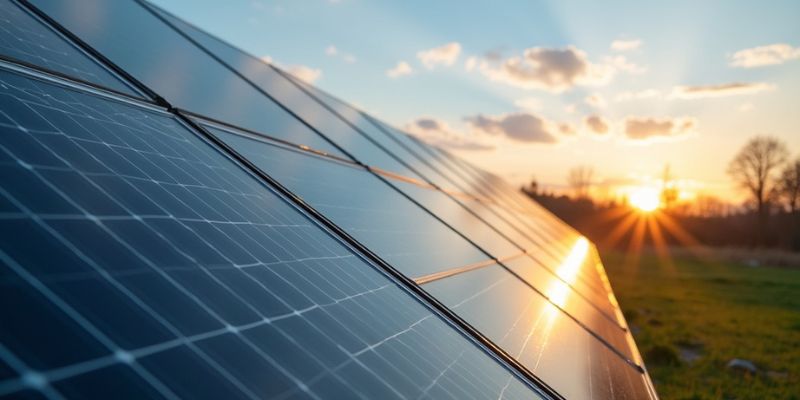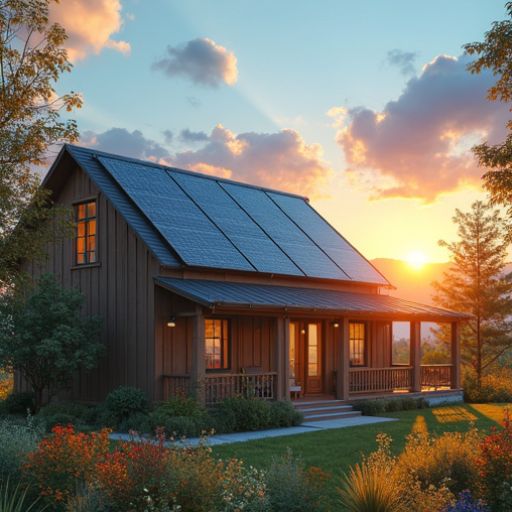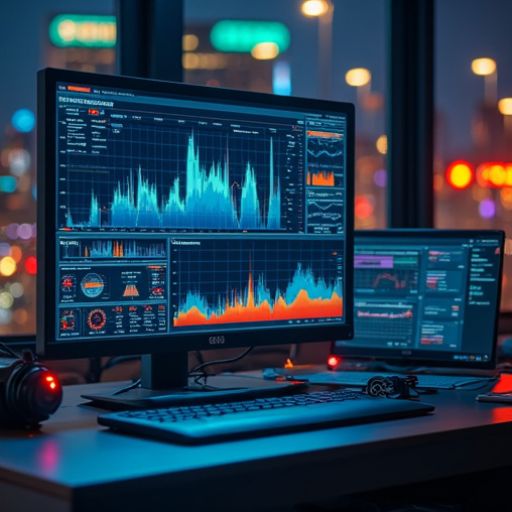15 Solar Panel Mistakes That Are Draining Thousands From Your Wallet (Stop #7 Today!)
You’ve finally decided to invest in solar panels, but what you don’t know could be costing you thousands.
While making the switch to solar power can greatly reduce your energy bills, common installation and maintenance mistakes can quickly erode those savings.
From poorly positioned panels that waste potential energy to overlooked insurance requirements that could leave you vulnerable, these costly errors affect countless homeowners.
As energy prices continue to rise, it’s essential to understand the most damaging solar panel mistakes and how to avoid them.
Let’s explore the top 15 missteps that might be draining your wallet right now.

Poor Panel Orientation
On most residential roofs, improper panel orientation can slash your solar energy production by 15-30%.
Your panels need to face true south in the Northern Hemisphere (or true north in the Southern Hemisphere) to maximize sun exposure throughout the day.
Even a 20-degree deviation from ideal orientation will greatly impact your system’s performance.
Don’t let installers take shortcuts with panel placement.
You’re investing thousands in solar technology – demand a proper orientation analysis.
Professional installers should use solar pathfinder tools and modeling software to determine your roof’s best placement angles.
If your roof doesn’t allow for ideal orientation, consider ground-mounted arrays or adjustable racking systems.
These alternatives might cost more upfront but will pay for themselves through increased energy production and faster ROI on your solar investment.
Ignoring Shade Coverage

Three major shade sources can devastate your solar panel performance: trees, chimneys, and neighboring buildings.
Even partial shade on just one panel can reduce your entire system’s output by 25-35%, costing you thousands in lost energy production annually.
Don’t fall for installers who downplay shade impacts.
You’ll need a thorough shade analysis using solar pathfinder tools to map year-round shadows.
Consider these solutions: trim or remove problematic trees, install micro-inverters to isolate shaded panels, or relocate panels to shade-free zones on your property.
Taking control of shade issues before installation saves you from costly fixes later.
Get a professional shade assessment and demand a detailed performance guarantee that accounts for seasonal shade patterns.
Your financial independence depends on maximizing every panel’s exposure to direct sunlight.
Skipping Professional Maintenance
Many homeowners invest heavily in solar panel placement and shade management but overlook regular professional maintenance – a mistake that can slash system efficiency by up to 30%.
While you might think DIY cleaning is sufficient, certified technicians can spot micro-cracks, faulty wiring, and deteriorating connections that aren’t visible to untrained eyes.
They’ll use specialized equipment to test voltage outputs, ensuring your system generates maximum power year-round.
You’ll save thousands by scheduling bi-annual professional inspections that prevent costly emergency repairs and system failures.
Your technician will clean hard-to-reach areas, calibrate inverters, and tighten connections – tasks that maintain peak performance and extend your system’s lifespan.
Don’t let poor maintenance rob you of energy independence; protect your investment with expert care that keeps your panels operating at peak efficiency.
Wrong Solar Panel Size

Selecting incorrectly sized solar panels can devastate your system’s performance and lead to significant financial waste.
You’ll either overpay for excess capacity you don’t need or struggle with insufficient power generation that forces continued reliance on grid electricity.
Before investing in solar panels, calculate your actual energy consumption patterns through a detailed home energy audit.
Consider factors like your roof’s available space, average daily sunlight hours, and seasonal variations in power needs.
Don’t fall for the “bigger is better” sales pitch – your goal is ideal sizing for your specific situation.
Professional solar consultants can help you determine the best system size by analyzing your utility bills, roof orientation, and local climate data.
You’ll maximize your return on investment while achieving the energy independence you’re seeking.
Dirty Solar Panels
Failing to maintain clean solar panels severely reduces their efficiency, potentially slashing power output by 15-25%.
Dust, bird droppings, pollen, and leaves create a barrier between sunlight and your panels’ photovoltaic cells, effectively throwing money away each month.
You’ll want to establish a regular cleaning schedule – monthly in dusty areas, quarterly in cleaner regions.
Don’t rely on rainfall; it often leaves behind mineral deposits that further reduce efficiency.
Use a soft brush, deionized water, and specialized solar panel cleaning solutions to protect your investment.
For maximum results, clean your panels during early morning or evening hours when they’re cool.
If you’re not comfortable climbing onto your roof, hire a professional cleaning service – it’s far cheaper than losing thousands in reduced energy production annually.
Inadequate Roof Assessment

Prior to solar panel installation, a thorough roof assessment stands as a vital yet often overlooked step that can make or break your investment.
When you skip this essential evaluation, you’re risking thousands in future repairs and compromising your system’s efficiency.
Your roof needs to meet specific structural requirements to support the additional weight of solar panels, which typically add 2.5-4 pounds per square foot.
You’ll want a professional to check your roof’s age, condition, orientation, and load-bearing capacity.
They’ll also assess shading patterns and identify potential obstacles like chimneys or vents.
Don’t let inadequate roof assessment drain your solar investment.
Get a certified inspector to evaluate your roof’s integrity, and you’ll avoid costly repairs, structural issues, and the headache of removing panels for emergency fixes later.
Cheap Low-Quality Hardware
Many homeowners choose bargain-basement solar components to cut initial costs, but this decision often backfires through reduced efficiency and frequent replacements.
These low-quality components typically degrade faster, generate less power, and fail more frequently than premium hardware.
You’ll want to invest in tier-one solar panels, high-efficiency inverters, and professional-grade mounting systems.
Top manufacturers like SunPower, LG, and Enphase offer warranties up to 25 years because they’re confident in their products’ longevity.
Quality hardware maintains 85-90% efficiency after two decades, while cheap alternatives might drop below 70% in just five years.
Don’t compromise on essentials like MC4 connectors, junction boxes, and racking systems.
The right components will maximize your energy independence and deliver reliable performance without constant maintenance or replacements.
Overlooking Local Weather Patterns

While quality hardware forms the foundation of your solar system, local weather conditions determine its real-world performance.
You’ll throw money away if you don’t account for your area’s specific cloud cover, rainfall patterns, and seasonal sun angles when designing your setup.
Don’t rely on national averages or general guidelines.
Your property’s microclimate matters – factors like morning fog, afternoon storms, or shade from nearby mountains can slash your system’s output by 25-40%.
You need data-driven solutions based on your exact location.
Install a solar irradiance meter for several months before committing to panel placement.
Track sun exposure throughout different seasons, and adjust your panel quantity and positioning accordingly.
This upfront research will maximize your energy independence and protect your investment from weather-related underperformance.
Improper Wire Management
Dangling from rooftops and snaking between panels, poorly managed solar wiring creates serious safety hazards and performance issues.
Your system’s exposed or improperly secured cables can suffer UV degradation, physical damage from weather, and accelerated wear that leads to costly replacements.
You’ll lose significant power output when wires aren’t properly sized or routed, creating voltage drops that reduce your system’s efficiency.
Loose connections and improper grounding can trigger arc faults, potentially causing fires or system shutdowns.
Don’t let faulty wiring compromise your energy independence.
Take control by installing professional-grade cable management systems, UV-resistant conduit, and proper strain relief.
You’ll need weatherproof junction boxes and correctly sized wire runs to maximize power production.
Consider hiring a certified solar electrician to inspect and upgrade your wire management system – it’s a small investment that prevents major losses.
Missing Performance Monitoring

Because solar panel systems represent a significant investment, running them without performance monitoring is like driving a car without a dashboard.
You won’t know if your system’s underperforming until your electricity bill arrives – and by then, you’ve already lost money.
Modern monitoring systems track your panels’ real-time performance, alerting you instantly to problems like faulty inverters, shading issues, or dirty panels.
You’ll receive notifications on your smartphone when production drops below expected levels, letting you address issues before they impact your bottom line.
Don’t leave your solar investment’s performance to chance.
Install a monitoring system that provides detailed analytics, production metrics, and instant alerts.
You’ll maximize your return on investment while maintaining complete control over your energy production and independence.
Incorrect Inverter Selection
Selecting the wrong inverter can cripple your entire solar system’s performance and lifespan.
Your inverter transforms DC power from solar panels into usable AC power for your home, and choosing an incompatible or undersized model will drastically reduce energy production and system efficiency.
Don’t fall for the trap of buying the cheapest inverter or blindly accepting a contractor’s recommendation.
You’ll need to match your inverter’s specifications to your panel array size, voltage requirements, and power optimization needs.
String inverters work well for unshaded installations, while microinverters or power optimizers are better for partial shade conditions.
Consider future expansion plans too – your inverter should handle additional panels if you’re planning to scale up.
Invest in quality brands with solid warranties and proven track records to maximize your system’s ROI.
Neglecting Insurance Coverage

Many homeowners overlook the critical need for solar-specific insurance coverage, putting their investment at risk.
Your standard homeowner’s policy likely won’t fully protect your solar installation against specific damages, theft, or performance issues.
You’ll need to secure either a solar panel insurance rider or a separate policy that covers your system’s full value.
Don’t forget to include coverage for lost income if your system malfunctions and stops producing power.
Most policies cost between $150-400 annually, which is minimal compared to replacing a $20,000+ system out of pocket.
Contact your insurance provider today to verify your coverage status and explore solar-specific options.
Remember to document your system’s components, installation costs, and expected energy production to guarantee you’re adequately protected against potential losses.
Poor Battery Storage Setup
A poorly configured battery storage system can cripple your solar installation’s effectiveness and lead to premature component failure.
You’ll waste thousands on replacements if you don’t properly size your battery bank, maintain correct temperatures, or guarantee adequate ventilation.
Don’t make the mistake of mixing old and new batteries or different battery types – this creates charging imbalances that’ll destroy your entire system.
Your battery bank needs to be installed in a clean, dry space with consistent temperatures between 50-85°F.
Install a battery monitoring system to track voltage levels and charging cycles.
Invest in a quality charge controller that matches your system’s specifications.
It’ll protect your batteries from overcharging and extend their lifespan.
Ignoring Local Incentives

Homeowners leave thousands of dollars on the table by overlooking local solar incentives and tax benefits.
You’re missing out on state-level solar renewable energy credits (SRECs), property tax exemptions, and utility company rebates that could slash your installation costs by 30-60%.
Don’t let bureaucracy stop you from claiming what’s rightfully yours.
Your local utility company might offer net metering programs, allowing you to sell excess power back to the grid.
Many states provide sales tax exemptions on solar equipment, while counties offer expedited permits and reduced fees for solar installations.
Take control of your energy independence by researching available incentives through DSIRE (Database of State Incentives for Renewables & Efficiency).
Connect with local solar installers who’ll help navigate paperwork and maximize your savings through every available program.
Insufficient Mounting System
While investing in premium solar panels might seem like the top priority, choosing the wrong mounting system can compromise your entire solar installation’s safety and efficiency.
Your mounting system must withstand decades of wind, rain, and environmental stress while maintaining ideal panel angles for maximum energy production.
Don’t cut corners with cheap mounting hardware or DIY solutions.
A professional-grade mounting system typically costs 10-15% of your total installation but delivers essential benefits: secure roof attachment points, proper load distribution, and corrosion-resistant materials.
You’ll need rails designed for your specific roof type, whether it’s pitched shingles, flat membrane, or metal seam.
Consider microinverter compatibility and wire management solutions when selecting your mounts.
FAQs
How Long Does It Take to Receive a Return on Solar Panel Investment?
You’ll typically recover your solar investment in 5-10 years through energy savings, tax incentives, and utility rebates. Your specific payback period depends on local sunshine, electricity rates, and installation costs.
Can Solar Panels Be Installed on All Types of Roofing Materials?
Like a glove fits different hands, solar panels can adapt to most roofing materials. You’ll find solutions for asphalt, metal, tile, and slate, though some materials require specialized mounting systems for peak performance.
What Happens to Excess Energy Produced by My Solar Panels?
You’ll send excess solar energy back to the grid for credits on your utility bill, or you can store it in a home battery system for nighttime use and backup power.
Are Solar Panels Still Effective During Winter Months and Cloudy Days?
Don’t let winter throw you for a loop! Your solar panels still work effectively in cold months and cloudy days, though at reduced capacity. They’ll generate 10-25% of their summer output, maintaining energy independence.
How Many Solar Panels Do I Need to Power My Entire House?
You’ll need 20-24 panels for an average 2,000 sq ft home using 11,000 kWh annually. Calculate your specific needs based on your energy bills, local sunlight hours, and roof orientation for ideal sizing.
Final Thoughts
Don’t let your solar investment become like a sports car stuck in first gear – operating far below its potential.
Just as a Formula 1 racer needs precise tuning for peak performance, your solar system requires proper orientation, shade analysis, and regular maintenance to deliver maximum returns.
You’ll save thousands by avoiding these 15 common pitfalls, and with professional guidance, you’re looking at 25-35% more energy production.
Take action today to optimize your system’s efficiency.